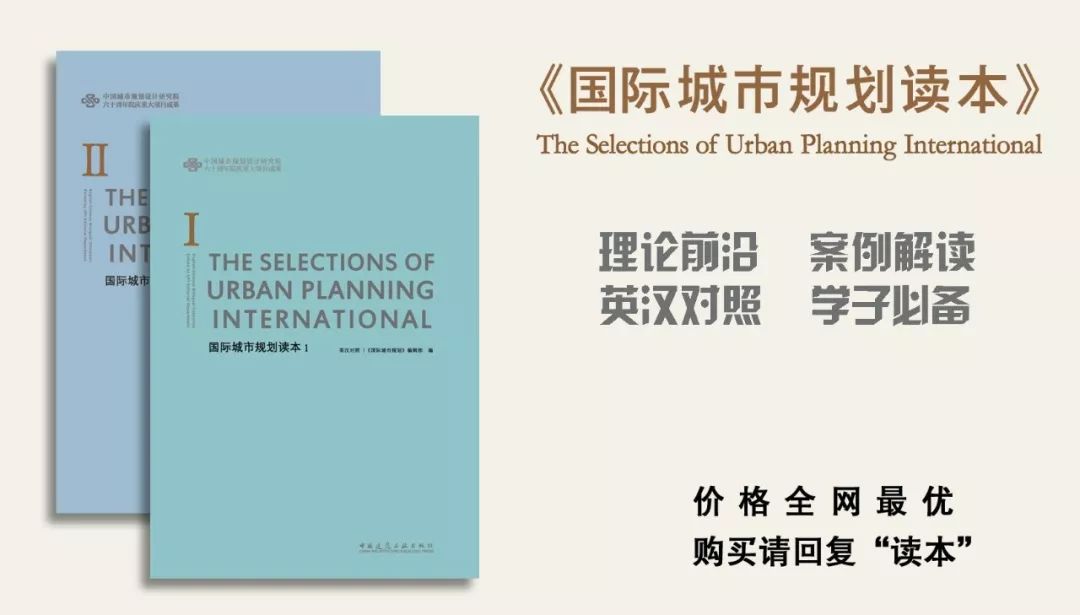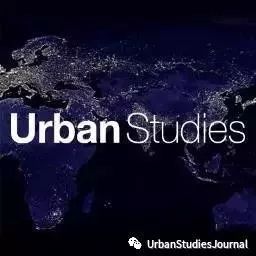
为了更好地传播知识,推动期刊国际合作,本刊与 Urban Studies 杂志达成网络合作,不定期推送友刊的精选文章摘要。读者们可以借此了解国际城市研究的新动向,同时学习城市研究领域学术英文的正规表达。欢迎大家批评指正。

Not too close, not too far: Urbanisation and life satisfaction along the urban hierarchy
不近亦不远:城市等级中的城市化和生活满意度
Abstract: Empirical evidence on the effect of urbanisation on individual self-reported well-being generally points to an egative effect of urbanisation and city size, at least in most developed economies. This article aims to re-assess this conclusion by claiming that this approach overlooks the fact that a city’s positive externalities may expand well beyond the urban boundaries, as postulated in urban economics theory. Based on survey data on self-reported life satisfaction derived from different waves of Eurobarometer surveys in the period 2005–2010 covering 21 European Union member countries, the article empirically verifies the existence of apositive association between urbanisation and individual well-being, depending on the proximity to settings of higher rank in the urban hierarchy. In particular, it shows that the higher the distance from a city larger than the one of residence of the respondent, the lower the probability of being satisfied with life.
摘要:关于城市化对个人自我报告的幸福感影响的经验证据普遍指出,至少在大多数发达经济体中,城市化和城市规模的影响是负面的。本文旨在重新评估这一结论,我们主张,这种方法忽视了一个事实,即一个城市的正外部性可能远远超出城市经济学理论所假定的城市边界。基于2005—2010年期间涵盖21个欧盟成员国的、不同波次的欧洲晴雨表(Eurobarometer)调查所得出的自我报告生活满意度调查数据,本文实证验证了城市化与个人幸福感之间存在正相关关系,但这取决于是否接近城市等级中较高等级的环境。特别是,研究结果表明,受访者所居住的城市离更大的城市越远,其对生活满意的概率越低。
Keywords: agglomeration, borrowed size, cohesion, development, diversity, life satisfaction, segregation, urbanization
关键词:集聚, 规模借用, 凝聚力, 发展, 多样性, 生活满意度, 隔离, 城市化
原文地址:https://doi.org/10.1177/0042098020962397

Activity locations, residential segregation and the significance of residential neighbourhood boundary perceptions
活动地点、居住隔离与街区边界认知的意义
Abstract: The inadequacies of residential census geography in capturing urban residents’ routine exposures have motivated efforts to more directly measure residents’ activity spaces. In turn, insights regarding urban activity patterns have been used to motivate alternative residential neighbourhood measurement strategies incorporating dimensions of activity space in the form of egocentric neighbourhoods – measurement approaches that place individuals at the centre of their own residential neighbourhood units. Unexamined, however, is the extent to which the boundaries of residents’ own self-defined residential neighbourhoods compare with census-based and egocentric neighbourhood measurement approaches in aligning with residents’ routine activity locations. We first assess this question, examining whether the boundaries of residents’ self-defined residential neighbourhoods are in closer proximity to the coordinates of a range of activity location types than are the boundaries of their census and egocentric residential neighbourhood measurement approaches. We find little evidence that egocentric or, crucially, self-defined residential neighbourhoods better align with activity locations, suggesting a division in residents’ activity locations and conceptions of their residential neighbourhoods. We then examine opposing hypotheses about how self-defined residential neighbourhoods and census tracts compare in socioeconomic and racial composition. Overall, our findings suggest that residents bound less segregated neighbourhoods than those produced by census geography, but self-defined residential neighbourhoods still reflect apreference towards homophily when considering areas beyond the immediate environment of their residence. These findings underscore the significance of individuals’ conceptions of residential neighbourhoods to understanding and measuring urban social processes such as residential segregation and social disorganisation.
摘要:住宅普查地理在捕捉城市居民日常接触方面的不足促使人们努力更直接地测量居民的活动空间。反过来,关于城市活动模式的见解已被用来激励替代性街区测量策略,这些策略以“自我中心型街区”的形式纳入了活动空间的维度。自我中心型街区是将个人置于其街区中心的测量方法。然而,此前未被研究的是,在与居民的日常活动地点保持一致方面,居民自定义的街区边界与基于人口普查和自我中心型街区测量方法的街区边界之间的比较。我们首先评估这个问题,研究居民自定义的街区边界(与其人口普查和自我中心型街区测量方法的边界相比)是否更接近一系列活动地点类型的坐标。我们发现很少有证据表明自我中心型街区(或者,更关键的是,自定义街区)更好地与活动地点相一致,这表明居民的活动地点和他们的街区的概念有所不同。然后,我们研究了关于自定义街区和人口普查区在社会经济和种族构成方面的比较的、相互对立的假设。总的来说,我们的研究结果表明,居民自定义的街区的隔离程度比人口普查地理产生的隔离程度要低,但在考虑居住地最邻近的环境以外的地区的情况下,自定义街区仍然反映出对同质性的偏好。这些发现凸显了个人对居住街区的概念对于理解和衡量城市社会过程(如居住隔离和社会解体)的重要性。
Keywords: activity space, ecometrics, neighbourhood perceptions, residential segregation
关键词:活动空间, 生态测量, 街区感知, 居住隔离
原文地址:https://doi.org/10.1177/0042098020966262

Hybrid coordination of city organisations: The rule of people and culture in the shadow of structures
城市组织的混合协调:结构阴影下的人员管理与文化机制
Abstract: Under far-reaching reforms, many cities have delegated core tasks previously delivered by their administrations to independent organisations that they formally own, e.g. municipal companies, or supervise, e.g. municipal trust funds. The coordination of these (as we callthem) ‘domestic’ city organisations has proven challenging. Extant literature argues that such coordination is achieved through a mix of various hierarchical, market and network mechanisms. Yet it is unclear how these modesare combined. Addressing this gap, we ask: How do governance modes interact in the hybrid coordination of domestic city organisations? Analysing the case of Vienna, where 100 domestic organisations employ about 60,000 people, we find that while cultural mechanisms, rooted in the network mode, are predominant, they unfold in the shadow of latent structural mechanisms, which are associated with hierarchy and market. In the background, structural mechanisms keep cultural coordination effective, while cultural mechanisms allow structural coordination to remain (generally) hidden. This study aims to contribute to the literature on the governance of public organisations by exploring the relationship between governance modes as well as furthering urban governance studies by applying insights from studies on the coordination of public organisations to the city context.
摘要:作为影响深远的改革措施,许多城市将以前由行政部门交付的核心任务委托给它们在法律上拥有(如市政公司)或监管(如市政信托基金)的独立机构。事实证明,协调这些机构(我们称之为城市“内务”机构)困难重重。现存文献认为,这种协调可通过各种等级、市场和网络机制的混合来实现。然而,目前还不清楚这些模式如何结合。为了填补这一空白,我们追问:在国城市“内务”机构的混合协调中,治理模式是如何相互作用的?通过分析维也纳的案例(100个城市“内务”机构雇用了大约60,000人),我们发现,虽然植根于网络模式的文化机制占主导地位,但它们是在与等级制度和市场相关的潜在结构机制的背景下展开的。在该背景下,结构机制保持文化协调的有效性,而文化机制允许结构协调保持(通常的)隐藏。本研究旨在探索治理模式之间的关系,并将公共组织协调研究的见解应用于城市环境以进一步推进城市治理研究,从而为公共组织治理文献做出贡献。
Keywords: coordination, (domestic) city organisations, governance, integration, Vienna
关键词:协调, 城市“内务”机构, 治理, 整合, 维也纳


推介 Urban Studies 期刊的最新文章和城市研究的最新动态
搭建中国城市研究学者交流切磋的学术平台
UrbanStudiesJournal
微信号 :USJ_online

原文始发于微信公众号(国际城市规划):期刊导航 | Urban Studies文章精选(80-83)
 规划问道
规划问道










